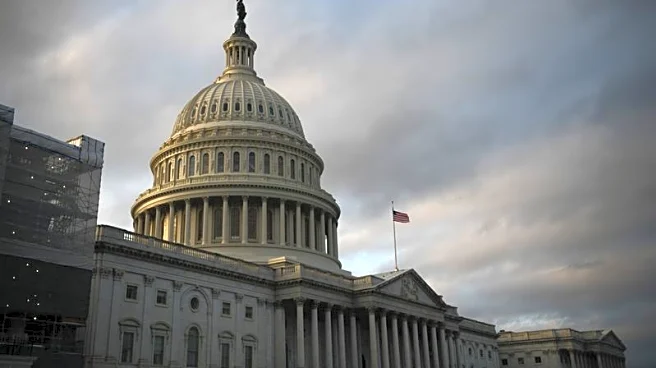Rapid Read • 9 min read
Political strategists are reevaluating the concept of the 'swing voter' in light of recent electoral trends. Historically, swing voters were those who might switch party preferences between elections. However, a new type of swing voter has emerged, characterized by intermittent participation in elections. These voters, often younger and from minority groups, are more likely to switch their votes between parties or choose not to vote at all. This shift has been highlighted by the 2024 presidential election, where a significant number of voters who participated in 2020 did not vote, and vice versa. This trend has created a more fluid and unstable electoral environment, with both parties struggling to secure the loyalty of these intermittent voters.
AD
The emergence of this new swing voter demographic has significant implications for U.S. politics. It challenges traditional campaign strategies that focused on persuading a small number of consistent voters. Instead, campaigns must now address the larger pool of voters who may or may not participate in elections. This shift could lead to more unpredictable election outcomes, as seen in the 2024 presidential election where President Trump benefited from the turnout of new voters. The ability of political parties to engage and mobilize these intermittent voters could be crucial in future elections, potentially altering the political landscape and influencing policy priorities.
As the 2026 midterm elections approach, both parties face the challenge of engaging these new swing voters. Republicans, in particular, must work to maintain the support of the voters who helped President Trump in 2024. However, these voters, who are often less engaged with the political system, may not turn out in midterm elections. Additionally, there is uncertainty about whether these voters will continue to support the Republican Party. Democrats, on the other hand, must find ways to re-engage minority voters who were disillusioned in 2024. Both parties may need to shift from negative campaigning to more aspirational messaging to effectively mobilize these voters.
The changing nature of swing voters highlights broader societal shifts, including the increasing political engagement of minority groups and younger voters. This trend reflects a growing recognition that traditional demographic assumptions about voter behavior are no longer reliable. The political system may need to adapt to these changes by developing new strategies for voter engagement and participation. Additionally, the focus on mobilizing intermittent voters could lead to a reevaluation of campaign finance strategies, as parties seek to allocate resources more effectively to reach these voters.
AD
More Stories You Might Enjoy












